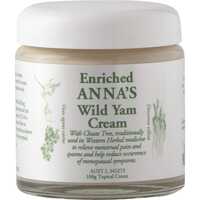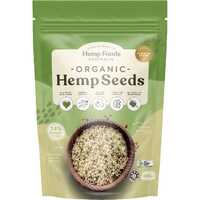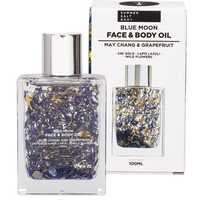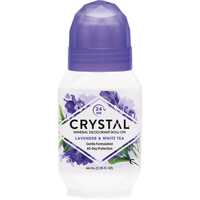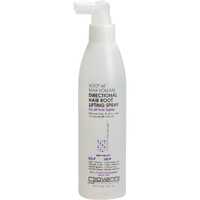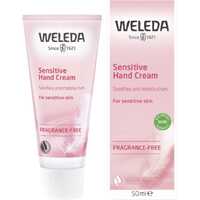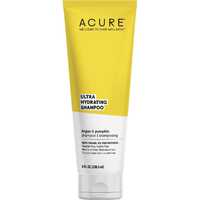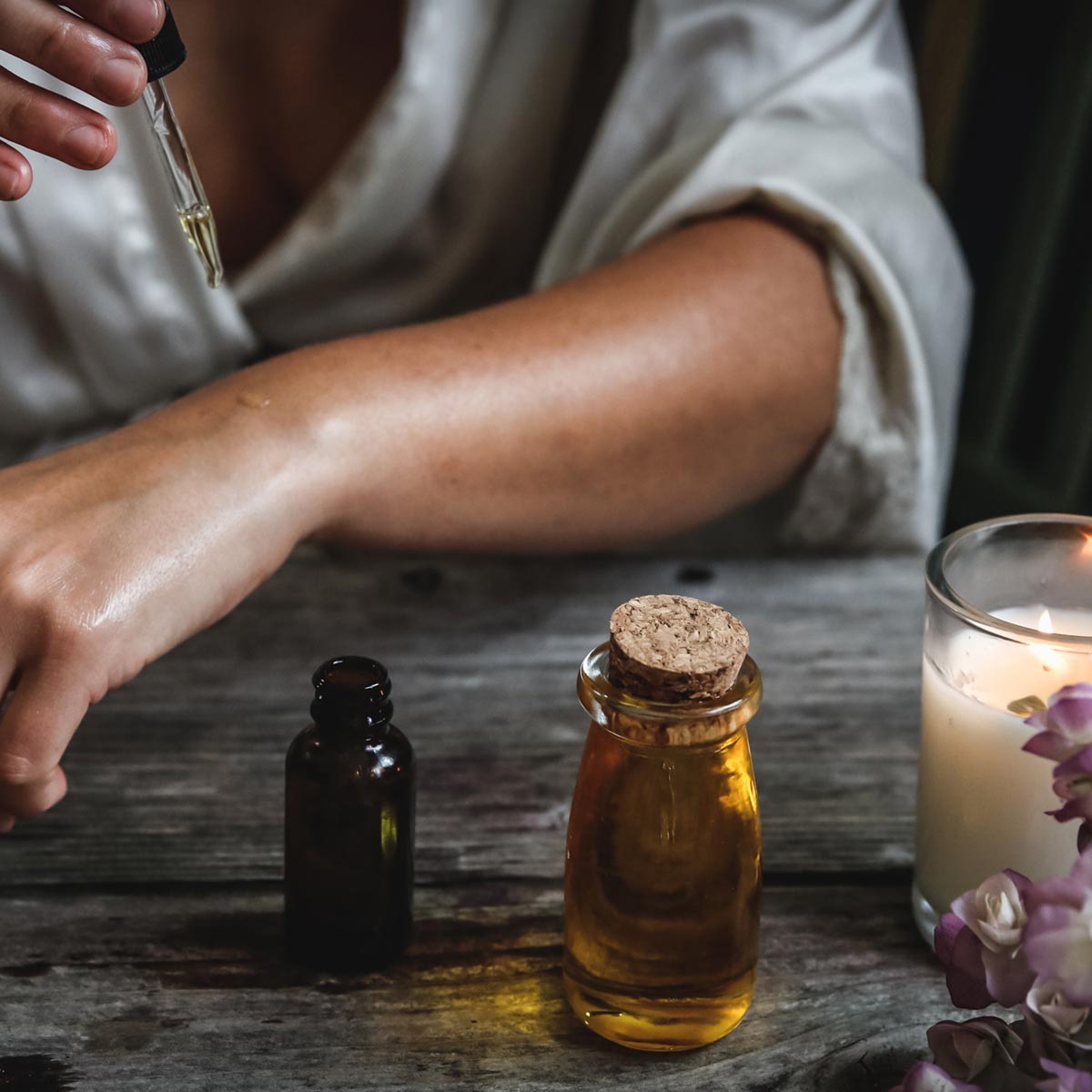The beauty sector is one of the largest and most dynamic industries in the world. Also known as cosmetics, this industry includes everything from makeup and moisturisers to perfumes, cleansers, and hair care products. Despite generating billions of dollars for the global economy, the cosmetic industry is dominated by a small group of multinational corporations. In an effort to improve product outcomes and grow profit margins, these companies often add preservatives or swap natural ingredients for synthetic chemicals.
Let's review the history of cosmetics, analyse common product elements, and look at some of the problematic ingredients you may want to avoid.
The Size of the Cosmetic Industry
In Australia, a cosmetic is defined under the Industrial Chemicals (Notification and Assessment) Act 1989 as "a substance or preparation intended for placement in contact with any external part of the human body." This does not include any products designed to "prevent, diagnose, cure or alleviate any disease, ailment or defect." These things are called therapeutics instead, and they include products like anti-dandruff shampoos and antiperspirants.
The cosmetic industry is incredibly active and diverse, with the entire global sector generating US$278 billion in 2020. Despite slowing down recently due to COVID-19, this number is set to rise even further in coming years. The global market is projected to grow from $288 billion in 2021 to $415 billion in 2028 at a very healthy growth rate of 5%. While the size and growth rate of the modern beauty industry is unprecedented, cosmetics themselves have been around since ancient times.
A Short History of Beauty Ingredients
From religious ceremonies to cultural rituals and good-old vanity, human beings have always been invested in their appearance. The history of cosmetics stretches back at least 7,000 years, from ancient Egypt and Rome to the Middle East, China, and Japan. Cosmetics are used by people across the Earth, and for the vast majority of their history, natural ingredients ran supreme. The first evidence of cosmetics came from ancient Egypt, where both women and men applied makeup to enhance their appearance. Black kohl was used for eyeliner and eyeshadow, and everything from ochre to beeswax was applied topically to heal, soothe, and enhance.
Beauty products are also mentioned in the Old Testament, with the biblical figure Jezebel painting her eyelids for effect much like we do today. Traditional Christian values had an impact, however, and the process of adornment was looked down upon by many in society. Cosmetics were also rare in ancient Rome, with their use mostly limited to prostitutes and the very rich. By the Middle Ages, pale faces became trendy, and things like blush and lipstick were increasingly common. On the other side of the world, court ladies in China decorated their foreheads with a floral imprint, and geishas in Japan wore lipstick made from crushed safflower petals.
In recent centuries, the beauty industry has grown by leaps and bounds. New colours were introduced in the 1800s, advances in mirrors and photography boosted self-awareness, and modern marketing put cosmetics front of mind for society. As the industry discovered safe and effective new compounds, notions of skin care and hair care were introduced alongside healing and enhancing attributes. However, while the toxic substances of old were mostly swapped out for safe new ingredients, mass production techniques also saw the introduction of brand-new chemicals.
How are Beauty Products Made?
Today, we are blessed with a vast array of safe and effective beauty products made from natural ingredients. While compromises are made by large commercial producers, many smaller companies put environmental, ethical, and healthcare concerns front and centre.
Cosmetic ingredients can either be natural or artificial, with potential health impacts dependent on specific chemical compounds and quantities. While ingredients are regulated by government agencies in Australia, many people prefer naturally occurring products. Chemical sensitivities affect some people more than others, and ongoing research continues to pose questions surrounding safe chemical levels, interactions, and thresholds.
The following ingredients are central to most beauty products:
Water
As the foundation of life, water is a central ingredient in all cosmetic products. From creams and lotions to shampoos, conditioners, and makeup, H2O can be found in all beauty products. Water helps to dissolve other elements as a solvent, and it also forms emulsions to boost product consistency. Whether it's distilled or purified, the water used in cosmetic products needs to be free of microbes, toxins, and other pollutants.
Emulsifiers
An emulsifier is any ingredient that helps to mix liquids by keeping them from separating. Liquids such as water and oil easily form emulsions, and many beauty products are based on emulsion techniques. For example, small droplets of oil are dispersed in water, or isolated pockets of water are dispersed in oil. The surface tension between ingredients can be altered to produce well-known cosmetic effects.
Preservatives
Most commercial cosmetic products are made with preservatives, which help to inhibit the growth of microorganisms and extend shelf life. Preservatives can be natural or synthetic, and they need to be water-soluble to inhibit microbes. Common preservatives include parabens, benzyl alcohol, and salicylic acid. Limited or preservative-free beauty products are available to help avoid unwanted interactions.
Thickeners
Various thickening agents are used in cosmetic products to provide consistency. Thickeners come in various chemical forms, including lipids like cetyl alcohol and stearic acid, natural polymers like hydroxyethyl cellulose and gelatin, mineral thickeners such as magnesium aluminium silicate and bentonite, and synthetic ingredients like cetyl palmitate and ammonium acryloyldimethyltaurate.
Moisturisers
Also known as emollients, various moisturising treatments are used in cosmetic products to soften, soothe, and hydrate the skin. Once again, emollients can either be naturally derived or synthetic. Natural examples include coconut oil, olive oil, beeswax, and lanolin. Synthetic examples include many vegetable oils and petrochemical-derived ingredients.
Pigments
The beauty industry is based on appearance, and products have to look good on the body and on the shelf. Various ingredients are added to cosmetics to accentuate natural pigments and provide endless colour variations. From mineral ingredients like manganese and chromium oxide to plant-based beet powder and insect extracts, there are lots of great natural colours available.
Texture and shine
Along with colour itself, beauty products are often designed with glowing and shimmering effects. While lots of ingredients can provide this effect, many of them are synthetic in nature. Bismuth oxychloride and mica are two natural ingredients found in mineral-based cosmetics. However, mica often includes synthetic ingredients to boost the colour range, along with small amounts of heavy metals.
Fragrances
Along with looking good, many beauty products also try to smell great. A variety of natural and synthetic ingredients are used as fragrances, many of which are trade secrets. While fragrances must meet safety requirements set by the International Fragrance Association (IFRA), they are typically unlisted, which makes informed choices pretty much impossible.
The Problem with Many Beauty Products
Over recent years, the beauty industry has become increasingly controversial. There are many reasons for this growing contention, from aggressive marketing tactics and unrealistic image expectations to environmental damage, ethical concerns, and health problems. Throughout the history of cosmetics, lots of toxic and potentially toxic substances have been present. Luckily, many of these ingredients are unnecessary and easy to avoid by purchasing natural and organic beauty products.
The following ingredients can be problematic:
Parabens
Parabens are a family of chemicals added to numerous cosmetic products, including shampoo, conditioner, lotions, and cleansers. Parabens are an endocrine disruptor that mimics estrogen, with this group of hormones known to enhance tumour growth under certain conditions. Common parabens include ethylparaben, butylparaben, methylparaben, propylparaben, isobutylparaben, and isopropylparaben.
Heavy metals
Heavy metals such as aluminium, arsenic, cadmium, cobalt, chromium, lead, and mercury can be found in many beauty products. Some of these ingredients are added on purpose to improve cosmetic effects and boost shelf life, and others are a byproduct of reacting with other ingredients. Aluminium is found in many deodorants and antiperspirants, mercury is found in eye products and lipsticks, and other metals are found in nail polish, eyeliner, and foundation.
Triclosan
Triclosan is a common antimicrobial and antifungal agent that can be found in many cosmetic products. It's typically added to help prevent bacteria in products as diverse as toothpaste, skin cream, deodorant, and shaving products. Triclosan is an endocrine disruptor that can impact thyroid and reproductive hormones, impair muscle contraction, and reduce bacterial resistance. It's also been found to cause liver fibrosis and cancer in laboratory mice. Triclosan is already banned from antiseptic soap, but it can still be found in many other cosmetics.
Formaldehyde
Formaldehyde is a colourless gas added to numerous cosmetics — once again to prevent microbes. Formaldehyde is classified as a Group 1 carcinogen by the World Health Organization, and it can also cause skin irritation and breathing difficulties. Formaldehyde is not always listed as an active ingredient, as it's often the byproduct of other preservatives like quaternium-15, DMDM hydantoin, sodium hydroxymethylglycinate, bronopol, and glyoxal. These chemicals can be found in a variety of beauty products, including nail polish, hair gel, shampoo, and bodywash.
If you're looking for natural beauty products without unwanted preservatives and additives, Healthy Being has everything you need. Visit our online store and discover our great collection of face and body oils, skin and hair care products, natural deodorants, and so much more. With so many fantastic natural products available, you don't have to compromise when it comes to your health or beauty.
Click here to read Part 2 of this article for a full, detailed list of popular natural beauty ingredients.


 Certified Organic
Certified Organic Vegan Friendly
Vegan Friendly  Vegetarian
Vegetarian Organic Ingredients
Organic Ingredients Dairy Free
Dairy Free Gluten Free
Gluten Free Keto Friendly
Keto Friendly

















